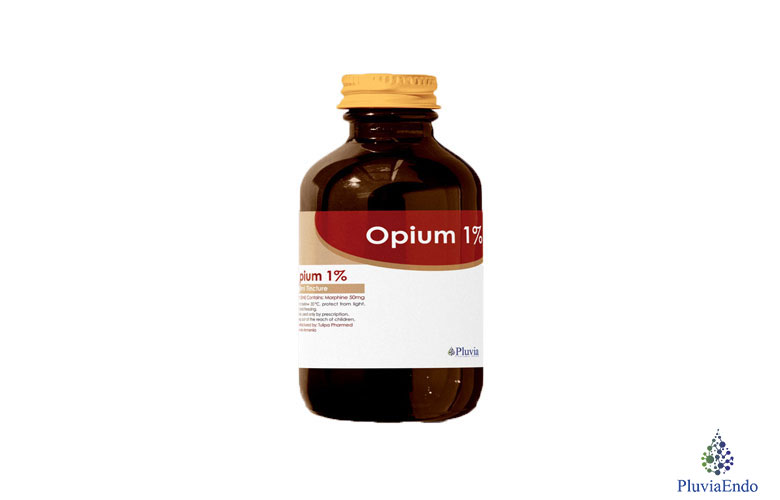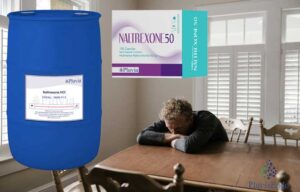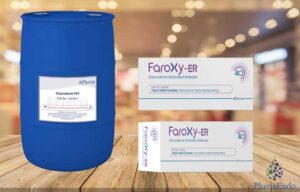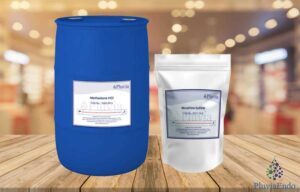Opium tincture, a potent analgesic derived from the opium poppy plant, has a rich history in pain management. Its regulated use as a pain killer underscores the need for meticulous dosage considerations. In this comprehensive guide, we explore its role as a pain killer, delving into dosage guidelines and the critical aspects of effective pain management.
Understanding Opium Tincture as a Pain Killer
Opium tincture, containing alkaloids like morphine and codeine, is recognized for its robust pain-killing properties. Its historical significance in pain relief has positioned it as a therapeutic option in specific medical scenarios. However, due to its potential for misuse and associated risks, its use as a pain killer is tightly regulated, emphasizing its role as a controlled substance in pain management.
The pharmacological characteristics of opium tincture necessitate a careful evaluation of various factors when determining the appropriate dosage for individual patients. These factors include the patient’s weight, the intensity of pain, tolerance, and sensitivity to opioids, as well as the patient’s medical history.
Individualized Dosage Determination for Optimal Pain Relief
The effectiveness of opium tincture as a pain killer relies on individualized dosage determination. This involves a careful consideration of various factors:
- Patient’s Weight:
PluviaEndo‘s Opium tincture dosages are often weight-based, ensuring precise administration aligned with the patient’s body size. This approach prevents underdosing or excessive dosing, optimizing the pain killer’s efficacy.
- Severity of Pain:
The intensity and nature of the pain guide dosage determination. The goal is to achieve effective pain relief without inducing excessive sedation or respiratory depression, highlighting the delicate balance in using opium tincture as a pain killer.
- Tolerance and Sensitivity:
Individual variations in opioid tolerance and sensitivity are critical considerations. Some patients may require higher doses for the desired pain-killing effect, while others may be more sensitive. Previous exposure to opioids and any history of opioid use disorder shape this assessment.
- Medical History:
A thorough examination of the patient’s medical history is essential in determining the safety and appropriateness of opium tincture use. Pre-existing conditions, current medications, and any history of adverse reactions to opioids inform this evaluation, preventing potential complications.
Initiation of Therapy
Opium tincture therapy as a pain killer typically commences with a low initial dose. This cautious approach allows healthcare providers to monitor the patient’s response, minimizing the risk of adverse effects while ensuring effective pain relief. The initiation phase emphasizes collaboration between healthcare providers and patients through open communication and education about expected effects and potential side effects.
Fine-Tuning the Pain Killer Dosage
Titration, the process of adjusting the dosage based on the patient’s response, is a critical aspect of opium tincture administration as a pain killer. Vigilant monitoring ensures effective pain relief without compromising safety. Regular check-ins, open communication, and patient reporting contribute to the fine-tuning of the painkiller dosage to meet dynamic needs.
Managing Breakthrough Pain
Its role as a pain killer includes addressing breakthrough pain – sudden, intense pain despite regular medication. Healthcare providers may prescribe rescue doses to be used as needed. However, stringent guidelines prevent overuse and potential overdose, ensuring the responsible use of opium tincture as a pain killer.
Patients are educated about the appropriate circumstances for using rescue doses and the importance of adhering to prescribed limits. Overreliance on rescue doses can lead to tolerance and increased risks, underscoring the need for clear communication between patients and healthcare providers.
Dosages of opium tincture pain killer for Special Populations
Pediatric Patients:
Opium tincture as a pain killer for pediatric patients demands meticulous dosing considerations. Weight-based dosages and careful monitoring are crucial, emphasizing the need for lower initial doses due to the heightened sensitivity of children to opioids.
Pediatric patients and their caregivers receive detailed instructions on medication administration, potential side effects, and the importance of strict adherence to prescribed dosages. Regular follow-ups ensure that the therapy remains safe and effective.
Elderly Patients:
Elderly individuals may be more susceptible to the side effects of opium tincture, such as sedation and respiratory depression. Lower initial doses are often recommended, with gradual titration while closely monitoring for adverse effects. The frailty and potential comorbidities associated with aging necessitate a cautious approach to opium tincture therapy in this population.
The dosage determination process for elderly patients involves a comprehensive assessment of their overall health, existing medications, and any age-related changes that may impact drug metabolism. This personalized approach aims to balance effective pain management with the preservation of the patient’s well-being.
Adverse Effects and Overdose Risk
As with any potent pain killer, opium tincture carries the risk of adverse effects and overdose if not used as directed. Common side effects include constipation, nausea, sedation, and respiratory depression. Patient education on recognizing overdose signs, lifestyle modifications, and seeking immediate medical attention is crucial in navigating potential pitfalls associated with opium tincture as a pain killer.
Patients receive clear instructions on managing potential side effects, including lifestyle modifications and the use of adjunctive medications. Additionally, they are educated about the importance of seeking immediate medical attention if they suspect an overdose or experience severe adverse effects.
The Landscape of Opium Tincture as a Pain Killer
In conclusion, opium tincture, when used as a pain killer, relies on precise dosage determination, careful titration, and vigilant monitoring. The individualized approach ensures effective pain relief while minimizing the risk of adverse effects and overdose. Open communication between healthcare providers and patients is paramount, emphasizing the responsible use of opium tincture as a controlled pain killer. Always follow medical advice and never self-adjust opium tincture dosage without consulting a healthcare professional.
In the landscape of pain management, opium tincture stands as a potent tool, offering relief under the watchful eye of responsible healthcare guidance. This comprehensive guide provides a thorough understanding of opium tincture as a pain killer, ensuring that its therapeutic potential is harnessed responsibly for the benefit of patients seeking effective pain management.









